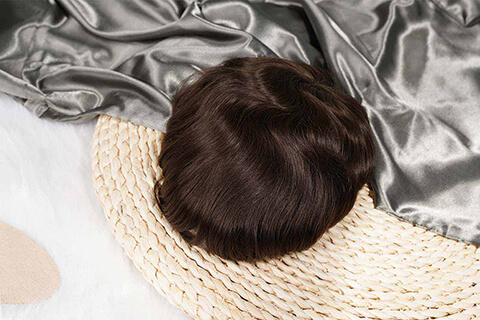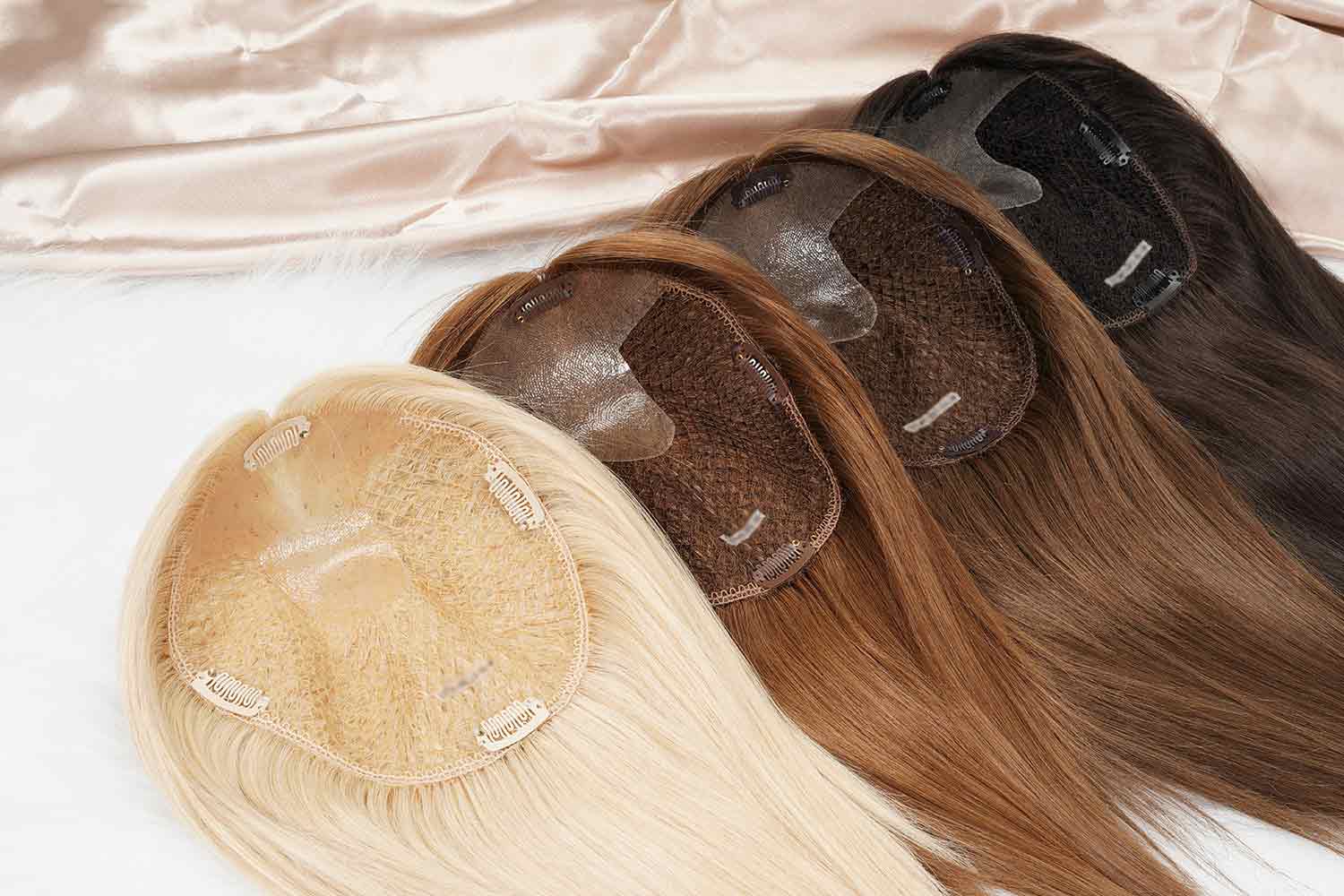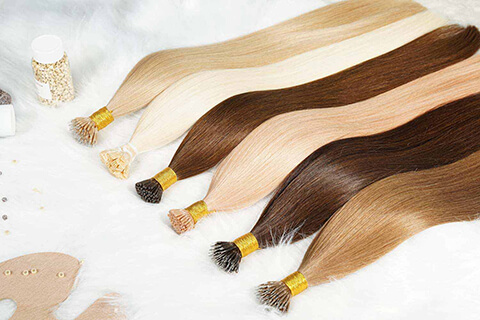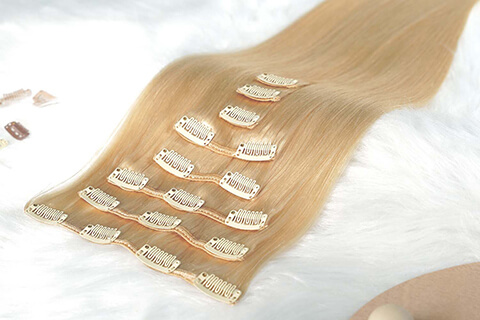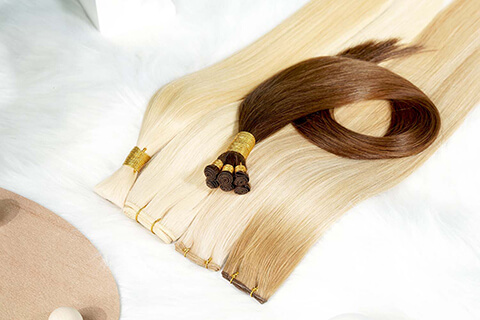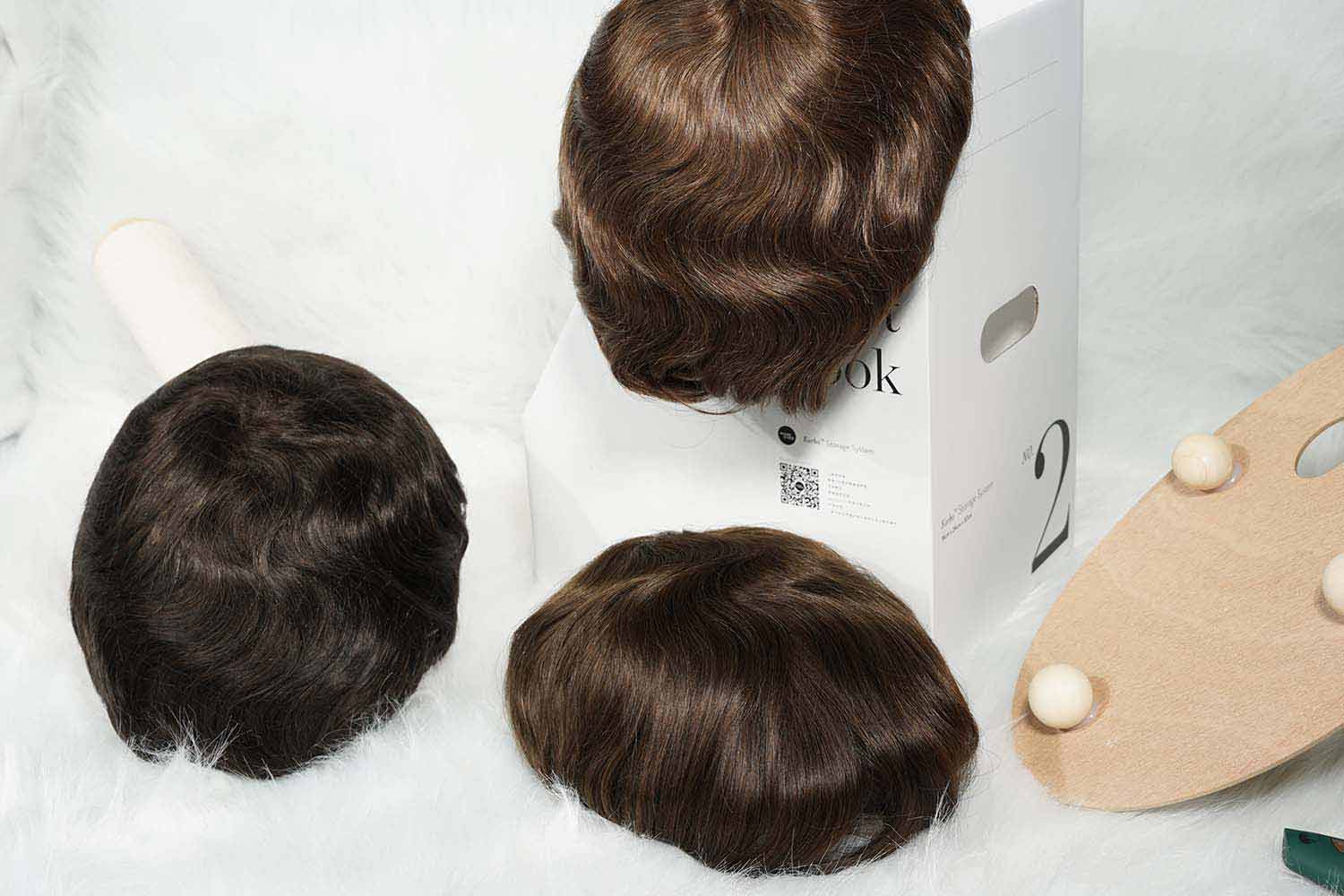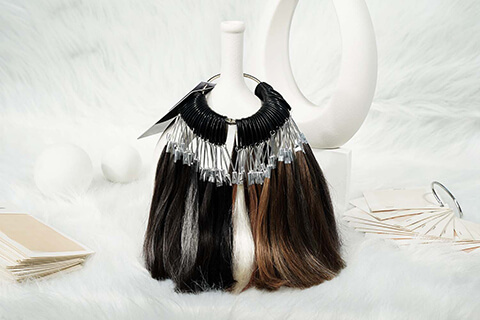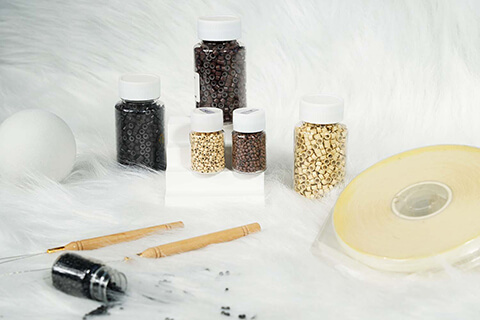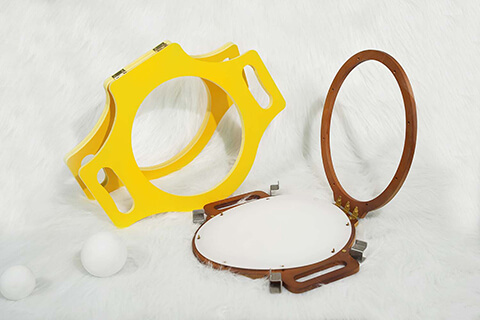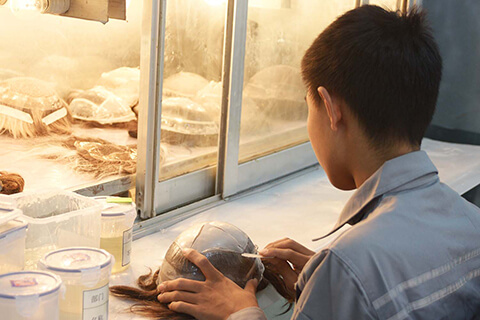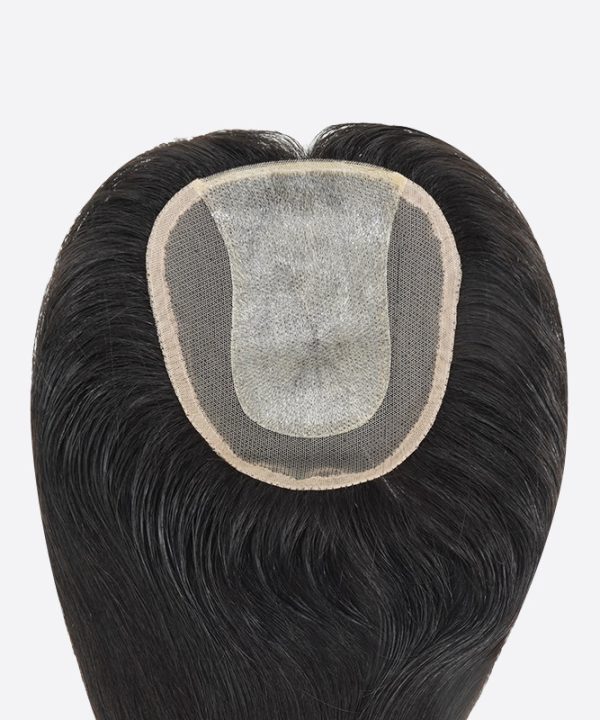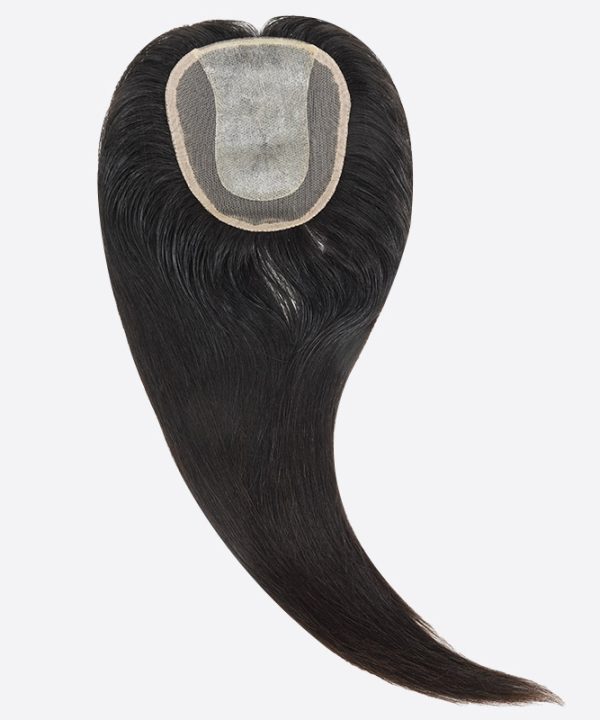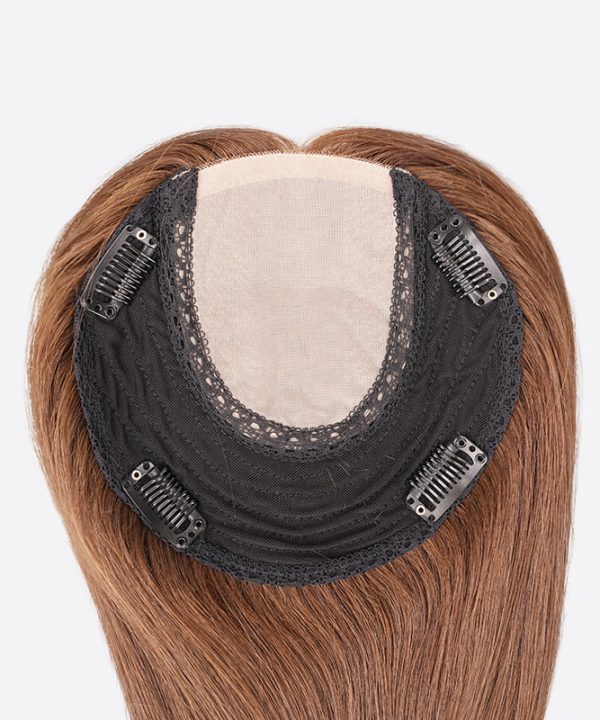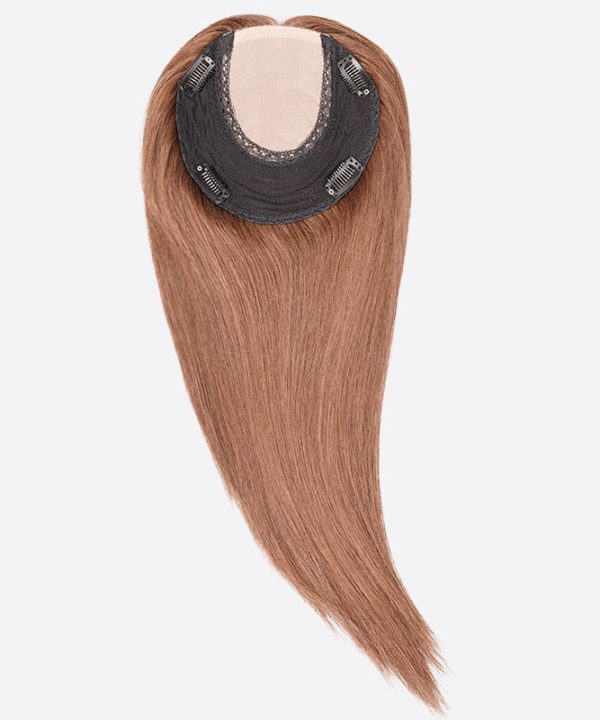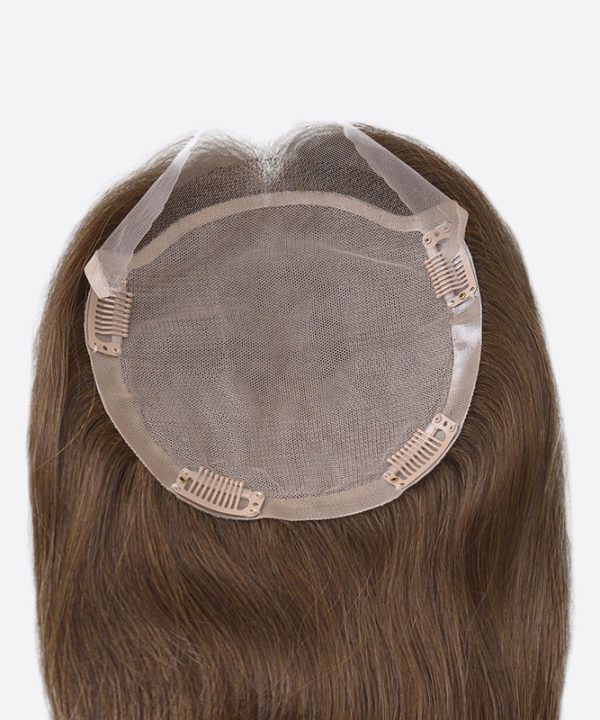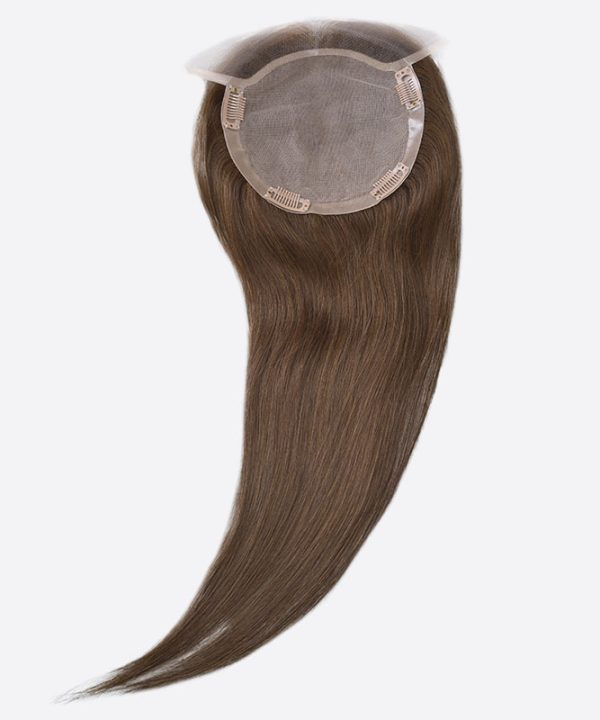No products in the cart.
GET IN TOUCH
If you want to know anything about our hair systems, simply send us a message by clicking the button below.
Frequently Asked Questions
1. What is a hair crown topper for advanced stage hair loss?
Do you have extensive hair loss near the crown of your head? Do you wish you could style your hair whatever you want without worrying about bald spots? If this is the case, a hair crown topper might be the answer you've been waiting for.
A hair crown topper is a special form of full volume hair topper meant to correct hair loss at the crown of the head. It is constructed of high-quality human or synthetic hair that has been meticulously created to mix in with your natural hair, giving the illusion of a full, healthy head of hair.
The hair crown topper has a lightweight and breathable foundation that firmly adheres to your current hair and provides a natural-looking solution to severe hair loss. The hair crown topper helps you to recover confidence in your look and style your hair as desired, whether you clip it in yourself or have it professionally done.
The adaptability of a hair crown topper is one of its main advantages. The hair crown topper, unlike other hairpieces that may limit your styling options, may be styled precisely like your natural hair. For a more personalized style, you may blow dry, curl, or straighten it, and even add highlights or lowlights.
Another advantage of using a hair crown topper is its long-term durability. A hair crown topper may last for months with appropriate care and maintenance, making it a cost-effective solution to severe hair loss.
But perhaps the most important advantage of a hair crown topper is the boost in confidence it can provide. For people experiencing hair loss, the emotional toll can be just as severe as the physical one. A hair crown topper may make you feel more like yourself, letting you navigate through life with more confidence and dignity.
Consider a hair crown topper if you have advanced hair loss at the crown of your head. It may be the solution you've been seeking to recover confidence in your looks and in yourself, with its natural-appearing appearance, adaptability, and durability.
2. How do choose a full volume hair topper for advanced stage Hair Loss?
Hair loss is a prevalent problem that affects individuals across various ages and sexes. Finding a remedy for people in the latter stages of hair loss might be difficult. Here are some recommendations for selecting a full volume hair topper for advanced stage hair loss.
Determine the size and shape of the hair loss area
Before selecting a hair crown topper, determine the size and shape of the area where hair loss is occurring. This will assist you in choosing a human hair crown topper that fits comfortably and firmly over the damaged region. To guarantee a suitable fit, measure the length, breadth, and depth of the hair loss region.
Select a hair topper that complements the color and texture of your natural hair
One of the most crucial components of picking a hair topper is choosing a color and texture that fits your natural hair; look for a full volume hair topper that comes in a variety of hues and textures to guarantee a smooth transition with your current hair.
Consider the density of the hair topper
The amount of hair in the piece is referred to as the density of the hair topper. A full volume hair crown topper is frequently the best solution for persons with advanced stage hair loss. To achieve optimum coverage and thickness, look for a hair topper with a high density.
Determine the type of base material
The foundation to which the hair is fastened is the basic material of a hair crown topper. Lace, monofilament, and silk are just a few of the basic materials available. When selecting a foundation material, consider your preferences as well as the amount of comfort and breathability you desire.
3. How often should your clients wash their hair with a hair crown topper?
Do you know how often your clients should wash their hair when using a hair crown topper? You're not alone, though. So, how frequently should your customers wash their hair while wearing a hair crown topper? The solution is not as simple as you would expect.
We all sweat at some point in the day, therefore it is not unfathomable that your wig or topper would start to smell after a while. Washing a hair crown topper every 6 to 8 years is generally advised.
Some helpful tips on how to wash hair toppers:
- If your customer has an oily scalp, for example, they may need to wash their hairpiece more regularly. If they have a dry scalp, though, they may be able to go longer between washes.
- It is crucial to keep in mind that over-washing a female hair topper for thinning crown might cause damage and limit its lifespan. As a result, avoid cleaning it too regularly. Use a gentle, sulfate-free shampoo and conditioner to clean the hairpiece.
- Also, hot water should be avoided since it might damage the hair strands. Use lukewarm water instead, and gently massage the shampoo into the hair, taking care not to tangle it.
- Rinse the hair well and apply conditioner just to the ends, avoiding the base where the hairpiece joins to the scalp.
- After washing, carefully wring out any excess water and air dry the hair crown topper. Heat styling tools should be avoided since they might harm the strands. Instead, detangle and style your hair using a wide-toothed comb.
In conclusion, the frequency with which your clients should wash their hair crown toppers is determined by several factors. Encourage your customers to consider their scalp health, lifestyle, and activity level when determining how frequently they should wash their hairpiece.









